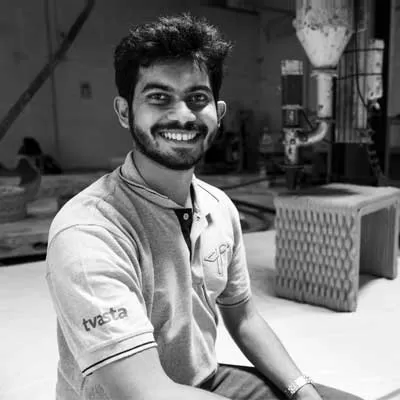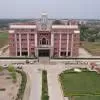High Jump!
Read full article
CW Gold Benefits
- Weekly Industry Updates
- Industry Feature Stories
- Premium Newsletter Access
- Building Material Prices (weekly) + trends/analysis
- Best Stories from our sister publications - Indian Cement Review, Equipment India, Infrastructure Today
- Sector focused Research Reports
- Sector Wise Updates (infrastructure, cement, equipment & construction) + trend analysis
- Exclusive text & video interviews
- Digital Delivery
- Financial Data for publically listed companies + Analysis
- Preconceptual Projects in the pipeline PAN India

3D Sustainable Construction
Founded in 2016 by IIT-Madras alumni, Tvasta is pioneering the transformation of construction through 3D printing. By creating an end-to-end technology stack, the company focuses on faster, cost-effective and sustainable solutions, redefining industry practices and setting benchmarks for innovative, green construction methods. VS Adithya, CEO and Co-Founder, Tvasta, shares his vision, journey and long-term goals in conversation with R SRINIVASAN. Excerpts:Please share the Tvasta journey, the source of inspiration, why this name was chosen and how the funding ha..

With a strong international presence, we are poised for further expansion
EPC company Varindera Constructions (VCL) has completed 31 construction projects in the past 10 years with 20 ongoing projects in India and overseas as in March 2024. Varinder Kumar Garg, Chairman, shares factors behind the company’s stellar performance in its residential, commercial, metro, railway and institution projects and the material magnitude of the Hasimara Air Force Station project, which plays a key role in deployment and operations of Rafale jets in India, as well as his perspective on the latest technologies, sustainability, skill shortage and the company’s internati..

Campal Stadium Project Delayed
The football stadium and parade ground project in Campal, Panaji, which was initiated under the smart city plan, has yet to be completed, even though it is over a year past its original deadline. The project started on March 21, 2022, and according to the initial work order, it was supposed to be finished by September 20, 2023. Imagine Panaji Smart City Development Ltd (IPSCDL) has reported that 98% of the work is complete, with the final 2% expected to be finished by March 2025. "A small area where the concrete batching plant is situated needs completion," they said. The project's total est..















